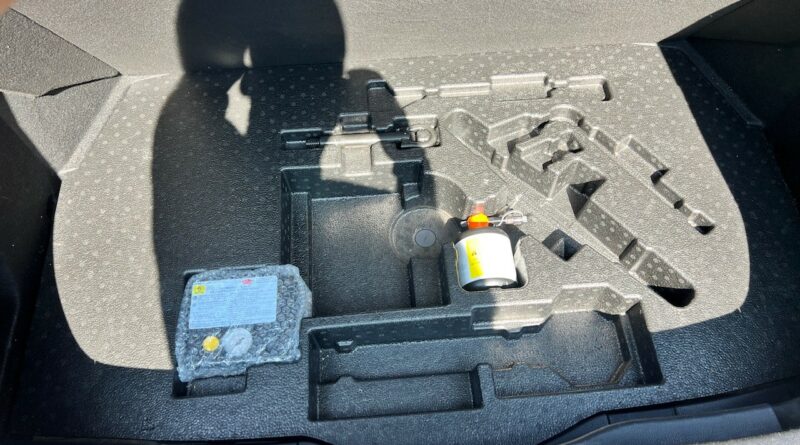What Are Tyre Sealants and How They Work
Understanding what are tyre sealants and how they work, their benefits, limitations, and the best practices for using them can help you make an informed decision about keeping one in your vehicle. Tyre sealants are an essential tool for many drivers, providing a quick and temporary solution to punctures and slow leaks.
What are these Sealants?
Tyre sealants are liquids or gels that are injected into a tire through the valve stem to seal punctures and prevent air loss. They can be used as a preventive measure or as a repair solution after a puncture has occurred. The sealant coats the inside of the tire and, when a puncture occurs, it fills the hole and forms a plug, allowing you to continue driving.
Types of Tyre Sealants
- Aerosol Sealants: These are pre-packaged in a pressurized can and are easy to use. Simply attach the nozzle to the valve stem and press the button to release the sealant.
- Liquid Sealants: These come in bottles and require a pump or injector to apply. They are often used in off-road and heavy-duty applications.
- Pre-Installed Sealants: Some tyres come with sealants pre-installed. These are typically used in high-risk environments like construction sites.
How Do Tyre Sealants Work?
Tyre sealants work by using a combination of adhesives and fillers to seal punctures. When the sealant is injected into the tyre, it coats the inner surface. As the tyre rotates, centrifugal force distributes the sealant evenly. When a puncture occurs, the escaping air carries the sealant to the hole, where the fibers and particles in the sealant plug the puncture and prevent further air loss.
Benefits of Tyre Sealants
Quick and Convenient
Tyre sealants offer a fast and easy way to deal with a flat tire, allowing you to get back on the road quickly without needing to change the tire.
Temporary Fix
Sealants provide a temporary repair that can last long enough to get you to a tire repair shop, saving you from being stranded on the side of the road.
Preventive Measure
Some sealants can be used as a preventive measure, reducing the risk of punctures causing a flat tire in the first place.
Lightweight and Portable
Sealant kits are compact and easy to store in your vehicle, making them a practical addition to your emergency roadside kit.
Limitations of Tyre Sealants
Not a Permanent Solution
Most are not washable and will damage tyre even you have temporary repaired it. Tyre sealants are intended as a temporary fix. It is essential to have the tire professionally repaired or replaced as soon as possible.
Limited Effectiveness
Sealants are generally effective for punctures up to 6mm in diameter. Larger punctures, sidewall damage, or blowouts cannot be repaired with sealants.
Potential for Damage
Some sealants can damage tire pressure monitoring systems (TPMS) or cause corrosion to the wheel rim. It’s crucial to choose a sealant that is compatible with your vehicle’s components.
How to Use Tyre Sealants
1. Choose the Right Sealant
Select a sealant that is compatible with your type of tyre and vehicle. Check the product specifications to ensure it meets your needs.
2. Prepare the Tire
If possible, remove any objects (like nails) that caused the puncture. Position the puncture at the bottom of the tire to allow the sealant to flow into the hole.
3. Inject the Sealant
Follow the manufacturer’s instructions to inject the sealant into the tyre through the valve stem. If using an aerosol sealant, simply attach the nozzle and press the button. For liquid sealants, use the provided pump or injector.
4. Reinflate the Tire
After applying the sealant, reinflate the tire to the recommended pressure. This helps to distribute the sealant evenly inside the tire.
5. Drive Immediately
Drive the vehicle for 5-10 miles to allow the sealant to spread and seal the puncture effectively. Monitor the tyre pressure and ensure it remains stable.
6. Visit a Professional
Remember, tyre sealants are a temporary fix. Visit a professional tyre repair shop as soon as possible to have the tire properly inspected and repaired or replaced.
Tyre sealants are a valuable tool for any driver, offering a quick and convenient solution for temporary tire repairs. While they are not a permanent fix, they can help you get back on the road quickly and safely. Understanding the benefits and limitations of tyre sealants, and knowing how to use them properly, can give you peace of mind and keep you prepared for unexpected punctures. Always carry a sealant kit in your vehicle and be prepared for emergencies.
Buying a used VW. Buying used vauxhall, BMW, Jaguar, Ford, Volvo, Range rover, Bentley, Aston Martin, Porsche, Ferrari, Lamborghini, Maserati, Hyundai, Tesla, Honda, Pagani

